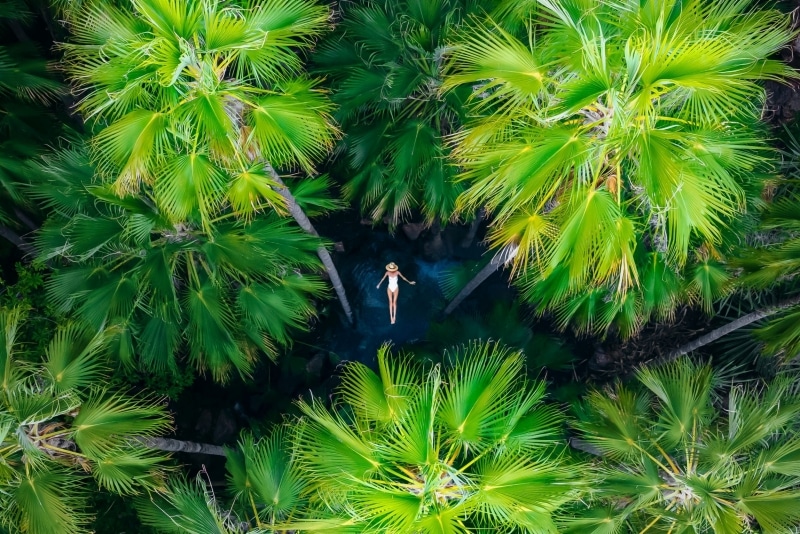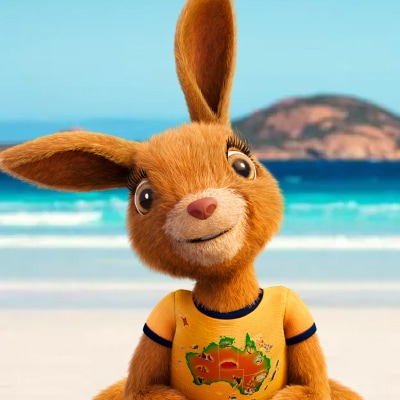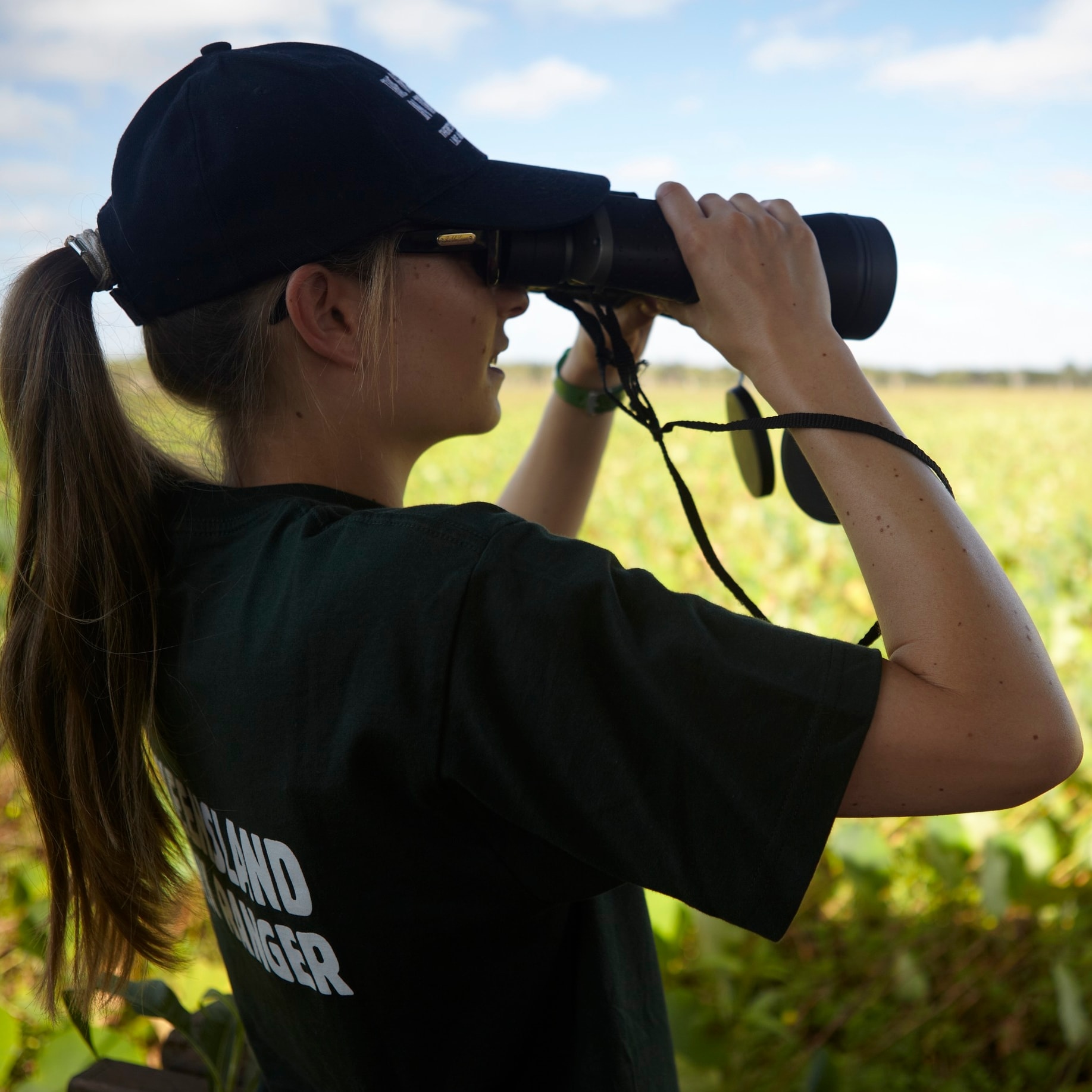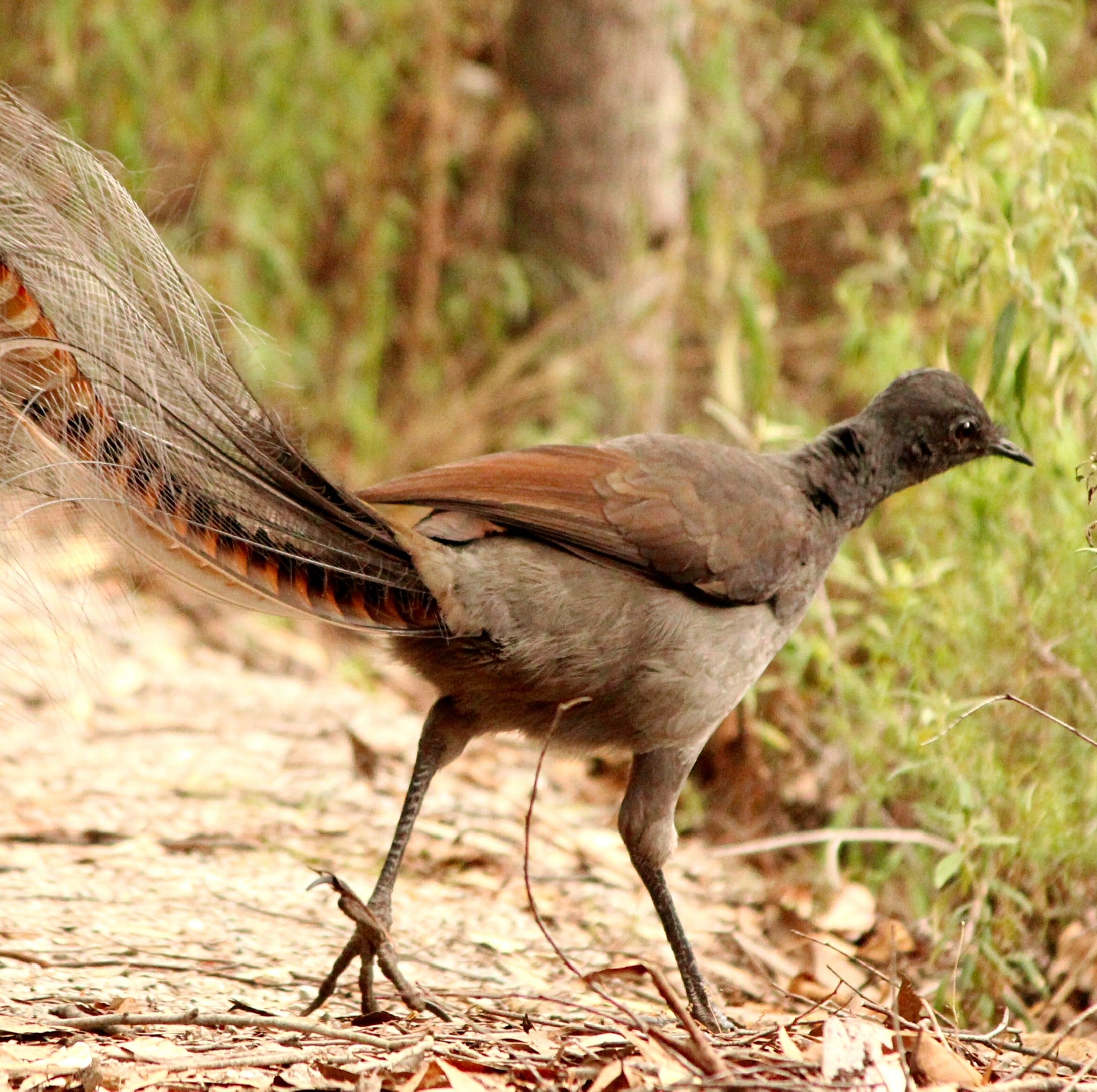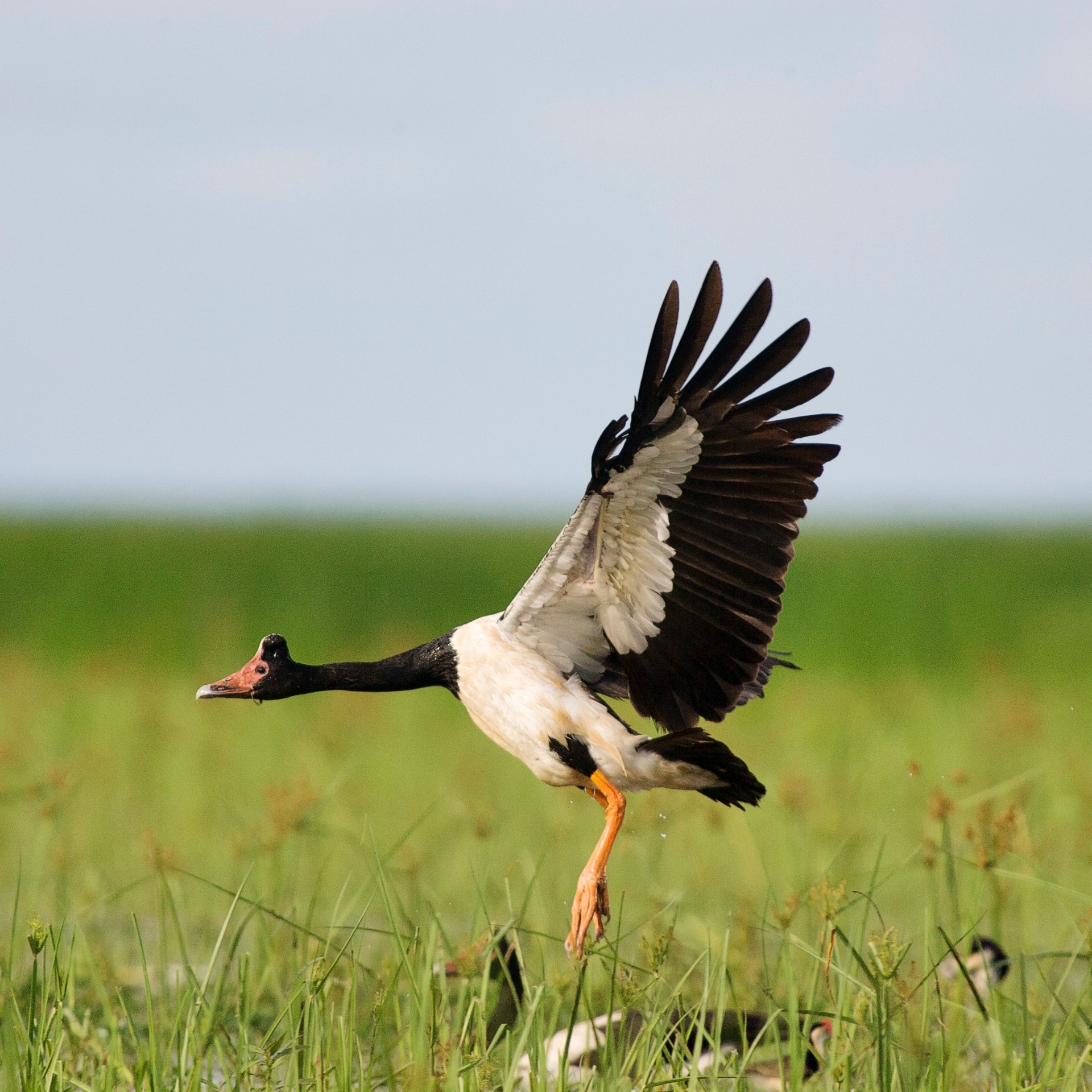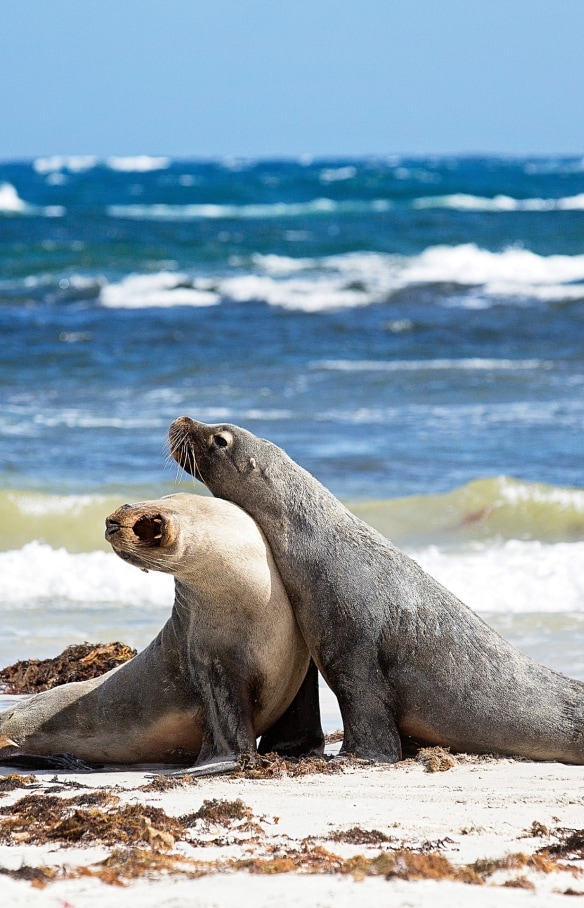
Birdwatching in Australia
Pack your binoculars for a close-up view of Australia’s incredible birdlife.
By Carolyn Beasley
We’ve got dazzling desert finches, aristocratic black swans, and the hefty, flightless emu. Migratory wading birds from Europe drop in for visits and 56 types of parrot chatter through every landscape. Australia is home to some 830 species of birds; an unusual bunch, with almost half of them occurring nowhere else.
You won’t need to go far to encounter our feathered friends. Even in urban areas you can’t miss the laugh of a kookaburra, or the screech of a hundred cockatoos. Whether you prefer tours or a self-drive safari, here’s how to plan your Australian birding adventure.
Near Sydney

Lord Howe Island, New South Wales © Zach Sanders
Centennial Parklands in Sydney’s eastern suburbs provides a great introduction to the birds of Australia, with more than 120 species living in the parks and gardens dotted around the city. Join a ranger for a tour or take a leisurely stroll among the kookaburras, cockatoos, cheeky rainbow lorikeets and the purple swamphen.
A short domestic flight away is Lord Howe Island, where the birds have no predators and are relatively fearless. The island hosts at least 168 types of resident and visiting birds, including breeding seabirds in their thousands. Conservation efforts have seen the endemic Lord Howe Island woodhen recover from near extinction, so you can enjoy the sight of these flightless rail birds for generations to come.
Near Melbourne

Penguins, Phillip Island Nature Park, Phillip Island, Victoria © Tourism Australia
Phillip Island, less than two hours’ drive south of Melbourne, has a special place in the heart of locals and visitors alike. Each day at sunset it’s penguin parade time, as the world’s smallest (and cutest) penguins shuffle and toddle from the ocean to their burrows. Join a guided tour to see this adorable event for yourself.
About an hour’s drive east of Melbourne, the Dandenong Ranges National Park is an ideal place to spot brilliant green and red king parrots and impressive yellow-tailed black cockatoos.
As unusual as it sounds, serious twitchers should head to Melbourne’s water treatment facility, Western Treatment Plant, where the artificially enhanced wetland supports thousands of shorebirds. Expect giant flocks of pink-eared ducks, red-necked stints and migratory sandpipers. During winter, search for the critically endangered orange-bellied parrot. Self-guided visits require a permit, so it’s best to book a tour with a specialist guide.
Near Brisbane

King Parrot, O'Reilly's Rainforest Retreat, Lamington National Park, Queensland © Tourism Australia
In the Scenic Rim hinterland region west of Brisbane and the Gold Coast, UNESCO World Heritage-listed Lamington National Park has rainforest reminiscent of the ancient Gondwana continent. Choose one of the hiking trails, looking out for the glossy sheen of the satin bowerbird and the star of the show, the Albert’s lyrebird with its ornate tail.
Drop in or stay at O’Reilly’s Rainforest Retreat, a historic lodge offering guided early morning bird walks that feature whipbirds and the scrub wrens. Families will love the wild bird feeding area for close encounters with outrageously coloured rosellas, king parrots and the spectacular gold and black regent bowerbird.
Near Cairns

Southern Cassowary, FNQ Nature Tours, Daintree National Park, Queensland © FNQ Nature Tours
In Australia’s tropical north-east, Cairns is the gateway to Queensland’s Daintree Rainforest, the world’s oldest tropical rainforest. The southern cassowary, the world’s third largest bird, can be found searching for fruit within the rainforest at Cape Tribulation or perhaps in the grounds of the Daintree Discovery Centre. If you’re lucky, you may see the father bird leading his chicks. Other highlights include kingfishers around the creeks and the noisy pitta.
Don’t miss the chance to visit the Great Barrier Reef and its islands while you’re in Cairns, where you’ll find seabirds like terns and boobies. Michaelmas Cay is a raucous place, hosting up to 20,000 breeding pairs of seabirds including sooty terns, common noddies, lesser crested terns and brown boobies. The island is a national park, with only a few tour companies permitted to visit.
Near Hobart

Inala Nature Tours, Bruny Island, Tasmania © Tourism Australia
Tasmania is an island state of towering forests, bucolic farmland, and a birdwatcher’s paradise. Just over an hour south of the capital Hobart, Bruny Island is one of the best places to spot the endangered and endemic forty-spotted pardalote. Booking a tour with an experienced company like Inala Nature Tours will vastly improve your chances of finding this tiny and wonderous bird.
On Maria Island, north-east of Hobart, Cape Barren geese were introduced from elsewhere in Tasmania, along with other animals, to create a living Noah’s Ark. Today, these wild geese roam the pastures of the island, almost unafraid of humans. Endemic species live here too, like the green rosella, and look out for the Tasmanian native-hen running past at top speed, affectionately known to locals as the “turbo chook.”
Near Adelaide

Yellow-tailed Cockatoo, Cygnet River, Kangaroo Island, South Australia © Exceptional Kangaroo Island
A short hop from the coast of Adelaide is Kangaroo Island, one of the best places in Australia for wildlife, including the feathered kind. Here, you’ll find the Kangaroo Island glossy black cockatoo, the only place where this subspecies is found. Join an in-depth tour to learn about cockatoo conservation and find other birdlife, ranging from seabirds to honeyeaters.
Three-hours’ drive north-west of Adelaide is Gluepot Reserve, a former sheep station located in semi-arid country. The reserve is owned by not-for-profit organisation BirdLife Australia, and is run by volunteers. A long list of birds can be seen here, including the malleefowl, the pastel pink Major Mitchell’s cockatoo, and the chestnut quail-thrush. The best way to visit Gluepot is with a guide who knows the habitats to search for each bird.
Near Perth

Emus, Exmouth, Western Australia © Tourism Western Australia
The vast west coast of Australia is sparsely populated, and birds can be seen from north to south. In the country’s north-west, the town of Broome is a two-and-a-half hour flight from Perth, and is the gateway to the wild Kimberley region. The Broome Bird Observatory is the self-proclaimed shorebird capital of Australia, where you’ll also see red-collared lorikeets, great bowerbirds and the rare yellow chat.
Halfway between Broome and Perth, the tourist town of Exmouth on Ningaloo Reef is a great place to see Australia’s largest bird, the emu, potentially sashaying around a caravan park or flouncing undeterred down the main street. To the south, offshore from the town of Geraldton, the Abrolhos Islands are one of Australia’s most important seabird nesting sites. The islands are best visited on a multi-day boat trip with informed nature guides, such as the Eco-Abrolhos.
Near Darwin

Bamurru Plains, Kakadu National Park, Northern Territory © Lords Kakadu & Arnhemland Safaris
Just two hours’ drive south-east of Darwin in the Northern Territory is Australia’s largest national park. Kakadu National Park is home for thousands of birds such as the brolga – which engages in elaborate dance routines – flocks of thousands of magpie geese and the striking black-necked stork (also known as the jabiru). A specialist bird guide can help you find the best places in this vast wonderland so you can make the most of your time.
Near Canberra

Tidbinbilla Nature Reserve, Canberra, Australian Capital Territory © VisitCanberra
Canberra, Australia’s capital city, is known as the “bush capital” – and the Australian National Botanic Gardens is a great place to spot some Aussie bush birds, perhaps on a tour. Keep an eye out for the incredible fairy-wren; the iridescent blue male appearing digitally enhanced. Also look for the endearing grey and red gang-gang cockatoos, as well as the Australian wood ducks.
Another popular nature spot is Tidbinbilla Nature Reserve, southwest of the city. Here, blue and red rosellas flit between trees, emus stroll through grasslands, and iconic animals such as kangaroos and even platypus can be spotted as a bonus Australian wildlife encounter.
